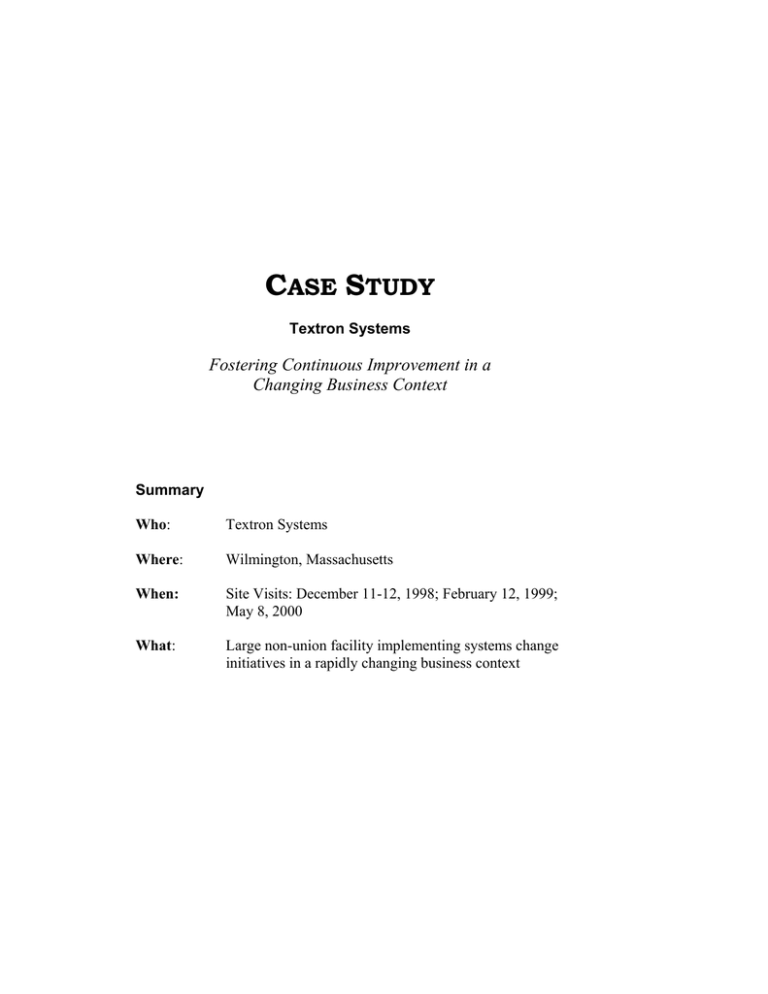
CASE STUDY
Textron Systems
Fostering Continuous Improvement in a
Changing Business Context
Summary
Who:
Textron Systems
Where:
Wilmington, Massachusetts
When:
Site Visits: December 11-12, 1998; February 12, 1999;
May 8, 2000
What:
Large non-union facility implementing systems change
initiatives in a rapidly changing business context
Introduction
For over five decades, Textron Systems has been an important
contributor to the U.S. defense aerospace business. Its breakthroughs
in thermal protection materials enabled NASA Apollo command
modules and Air Force intercontinental missiles to successfully reenter the earth’s atmosphere. High strength, lightweight boron
composites from Textron Systems help carry the primary structural
load in the Space Shuttle orbiter and today’s aircraft carriers rely on
Textron’s automated landing systems. Textron highlights smart
systems, including smart air and ground munitions, as its unique value
add in the 21st Century global marketplace -- products that can rapidly
acquire, analyze and act on real-time data inputs.
For most of its products, such as the smart munitions, Textron Systems
is a prime contractor with the U.S. government, while it also serves as
a first-tier supplier for other technologies, such as boron composite
components. The uncertainties associated with each role -- contractor
and supplier -- are different and both are part of the Textron story.
The constant adaptation of its product line and business strategy is a
defining feature of Textron Systems as a business. This is a significant
accomplishment for the business, but a constant challenge when it
comes to work organization and skill development.
Beginning with quality principles in the 1980s and extending into lean
principles in the 1990s, workplace change initiatives have been seen
by Textron Systems as key to business success. The current initiative,
which is entitled “10X” targets not just incremental gains, but
performance gains of an order of magnitude or gains that are ten times
current performance. Concurrently, Textron has long invested in
employee training and development, another significant part of this
case.
1
Textron Systems is part of the larger Textron Corporation, which
includes the Textron Automotive Corporation, Cessna, Bell
Helicopters and other businesses -- all of which have a high degree of
autonomy. Textron Systems is based in Wilmington, Massachusetts,
with additional facilities in three other locations. This case study is
focused on the Wilmington operations, which are non-union. As a
1,400-person facility, the spirit of the operation is reflected in an
internal presentation slide that features a picture of a huge gorilla and
the statement, “We’re competing with mega mergers.”
Key Challenges and Key Lessons Learned
The core business and employment challenge facing Textron is to
ensure a lean, flexible and agile organization to match a constantly
evolving business strategy. This has required innovation in the areas
of training, organizational development, and work organization.
Training has been a long-term priority for Textron Systems. When the
company was focused on products to support re-entry to the earth’s
atmosphere, it needed large cadres of engineers with this unique skill
set and a production workforce skilled with ceramics and other
specialized materials. Today, the business depends on engineers and
production workers with skills centered on smart munitions and other
related products. In-between, there have been significant shifts in the
business in each of the past five decades. The scale and scope of the
challenge became apparent in two sets of interviews that we
conducted. The first was a series of group interviews with five
different teams spanning production workers, engineers and
supervisors. The second was a series of individual interviews with
senior managers.
In each of the team interviews, the employees expressed a deep
commitment to acquiring new skills and abilities. They indicated that
new skills and training make it possible to periodically move from one
team to another and that being on the right team is critical when the
business shifts direction. As one team member noted, “People must
upgrade their skills to stay state of the art.” Another
pointed out, “Change does exist – needing new skills
doesn’t mean that you aren’t a good employee.”
“People must upgrade They also indicated, however, that it was hard to get
their skills to stay state timely and definitive information about just what the
of the art.”
future directions of the business were. Just because
managers said a given type of training was important
-Textron team member
was not, according to these employees, sufficient
information upon which to base their own career
prospects.
2
Interestingly, in the interviews with senior managers they expressed
frustration at not fully knowing what the available skill set of the
workforce was. They said that it was hard to get timely and definitive
information on what were the future career aspirations or even the
current capabilities of the workforce. Just because employees said
that a particular topic was interesting or important to them was not,
according to these managers, sufficient information upon which to
base the future prospects of the business.
The challenge here is that there are multiple stakeholders to the
training process -- each with key information that others need, but each
with legitimate concerns around how to ensure that the information is
credible. This challenge becomes particularly salient in the aerospace
context, where technology and markets constantly change.
During the group interviews, formal brainstorming took place around
current strengths and weaknesses. All of the groups mentioned
training opportunities as a strength, along with the work ethic,
flexibility, benefits and other matters. The weaknesses included
multiple layers of management, communications (across levels and
among teams), limited career opportunities (given the niche markets
served by Textron Systems), politics, and differences between
engineering and manufacturing cultures. In other words, many of the
formal programs and human resource systems are in place, but the
informal working of the organization prevents
the full potential from being realized.
“We ask people to
Continuous improvement is a closely related think about improving
business challenge. In response, the company the performance of
has fashioned its “10X” initiative. Begun in their part of the
October 1996, it is rooted in two thoughts that operation by a factor
have a transformative potential when combined of ten over a two-year
together. First, all employees and groups of period.”
employees are urged to make improvements in
-Noel Nightingale
their operations -- but not just small incremental
improvements. As Noel Nightingale put it, “We
ask people to think about improving the
performance of their part of the operation by a factor of ten over a twoyear time period.” This alone could be seen just as top-down
management pressure for improvement, were it not for the key second
part of the message. Again, Noel Nightingale comments, “At the same
time that we ask people to make a “10X” improvement, we also ask
them what resources and support would be required to do this.”
Framed this way, the “10X” sessions end up surfacing key systems
barriers and major systems change opportunities.
3
The 10X aims are centered on what Textron terms the business basics:
Reduce product cycle time; improve product quality; lower product
cost; minimize waste. The methodology for 10X builds on quality
principles and is as follows: Understand requirements; measure
process capability; improve the process; control process variables;
satisfy the customer. The aim with 10X is to avoid sub-optimal
“stovepipe” improvement and instead align improvements in service of
the end customer. As Michelle Johnson, a senior manager with lead
responsibility for 10X noted, “we have linked ‘lean’ and ‘10X’
together.”
In support of the “10X” effort, the “red book” of company
performance metrics was revised in January 1997 to include agreed
upon 10X metrics (it is literally a red binder, hence the name). This
was expanded a year later to feature an integrated productivity index.
Monthly red book sessions are held by the Vice President of
Operations to review work group, department and plant performance
improvements, which are tracked in the red book. The tone at these
sessions is constructive and non-blaming. If anticipated gains are
achieved, there is enthusiastic appreciation given. If not, there is a
problem-solving oriented discussion of what might be preventing such
gains. One team member commented, “I like 10X because it’s very
structured.”
Most of Textron’s production and engineering operations are now
organized around teams in order to best meet the ever-shifting business
requirements. The shift to teams has proven a valuable foundation for
the 10X improvement efforts and an appropriate framework to
organize employee training and development. It has, however, had
some unintended effects. As former Textron executive Ron Milauskas
put it, “We wanted to convey the team concept, so we eliminated all
the titles and made everyone a technician. Even though people were
getting more new assignments than before, the absence of new titles to
go with the new assignments made people feel like teams had made
their careers stand still.” Thus, the challenge is to foster cooperation
and interdependency at the group or team level, while still ensuring
that individual career progress can be tracked and recognized.
Restructuring has not been limited to front line operations. Not only
are production workers organized into teams, but also engineering
design primarily occurs through integrated product design teams.
Even at the executive level there has been restructuring – with over a
dozen senior executives in the early 1990s and a reduction to seven
vice-presidents now reporting to the president of Textron Systems,
primarily driven by the team structure.
4
Textron Systems is both a direct contractor and a supplier in the
aerospace industry. As such, it must meet the increasingly stringent
supplier certification requirements of the companies it supplies, as well
as administer similar systems with its own supply base. Aerospace
suppliers are also expected to contribute increasing levels of
engineering and design, all of which makes the management of
supplier relations a multi-dimensional challenge for Textron. As we
will see below, there are a number of innovations emerging around
long-term supplier agreements and opportunities for employees to set
up entrepreneurial businesses and become suppliers.
Summary of Types of Instability
Organizational instability has been a factor at Textron throughout the
1990s, but in different ways. In the early 1990s there was an initial
wave of cost-cutting initiatives that resulted in substantial layoffs.
Then, between 1995 and 1999, there was a surge in
the business, which included substantial new
hiring. Then, in late 1999, there was another wave One specific aspect of
of restructuring that involved the use of attrition government policy that
and some staffing reductions. The impact has been was noted with respect to
strongest on the most recently hired employees. It training is that job
is both the growth and the layoffs that drive the specific training can be
focus on skills and capabilities -- either to move billed as part of the
into areas that promise interesting work and some government contract,
degree of business growth during good times or to while more general
development skills can’t
limit vulnerability to layoffs during downturns.
always be billed.
A second form of instability, which is common in
many sectors, has been management turnover. In
the Textron case, this is evident with respect to the “10X” initiative.
The success of these efforts in Wilmington and other sister facilities
led one of its key champions, Noel Nightingale, to be promoted in
order to drive this approach at the corporate level. While this promises
to extend the ideas more broadly, it has also revealed a gap in the
Wilmington operation.
The “10X” initiative depends on
management’s commitment to provide the resources and support
associated with the “10X” proposals. As an on-site champion, Noel
drove this support. While the current management team is still
committed to “10X,” there is the risk that the loss of a key champion
may diminish the level of dedicated support. During a recent visit, we
learned that the “red book” reviews are still taking place, but that there
was also the fear of increased variability in the degree of passion
driving the effort.
5
Compounding the current business pressures are additional forces
created by the current job market, which is very tight. Some of the
most talented engineers and managers are being offered positions by
high technology firms that include stock options and other incentives.
As one leading operations manager noted, “This is a brain drain
affecting us and many others in the industry.” One member of a
software engineering team stated, “I am one of five people recently
hired and four have left to take other jobs.”
Technological instability is a fact of life at Textron. The computer
hardware and software in its smart products, for example, is constantly
evolving. While this is ever-present, it was seen as a given by most
people we met -- not as something that needed to be tempered or
addressed directly. By contrast, the instability and oversight costs
associated with government contracts were highlighted in a number of
individual and team interviews. One senior operations manager who
had recently transferred into the Wilmington plant from Textron’s
automotive division commented that: “The government is really going
to have to change. It seems the government wants to know everything
that you do here -- it is not at all like autos. This adds waste to the
system.” Other senior leaders at Textron point out, however, that
“there has been significant movement by government in the right
direction in recent years” -- citing the increased use of performance
specs and other lean practices.
One specific aspect of government policy that was noted with respect
to training is that job specific training can be billed as part of the
government contract, while more general development skills can’t
always be billed. In a traditional, mass production organization, this
distinction can at least be supported. By contrast, many topics, such as
team training or lean principles, involve general skills but are essential
to business success. One of the team members commented on the
paperwork that goes with government work, noting “the requirements
of the DCAA – the Defense Contract Auditing Agency – make things
very rigid.” Again, even though front-line works may see this as
rigidity, others in Textron point out that DCAA has made significant
improvements in recent years.
A final source of instability derives from mergers and restructuring
across the Textron Corporation. Three mergers have impacted this
facility over the last nine years, which include restructurings with Bell
Aerospace, Specialty Materials division and HR Textron. In each
case, products and activities have shifted among Textron locations,
impacting workforces and operations. Elements of Textron operations
in Lowell, Massachusetts, and other locations have also been
6
periodically restructured, with some impact on the Wilmington
workforce.
Perceptions of Instability
In order to better understand perceptions of instability, a survey was
administered in this location and five others where similar research is
under way. The results are listed in Table 1. A cross section of 93
professional, technical and production workers completed this survey.
More than some of the other locations, the employees in this facility
experience significantly more frequent instability due to changes in
government budget allocations and significantly less due to changes in
product demand (reflecting the relatively low level of commercial
work in this facility). Interestingly, changes in equipment and
technology were not seen as a common source of instability, which
either means that such changes are not frequent or that they are
effectively handled when they do occur. Like all of the employees
surveyed, changing customer requirements is a commonly encountered
source of instability.
Internally, the most common sources of instability concern changes in
budgets, changes in leadership vision, and tension/stress around
change. These forms of instability were also at relatively high levels
across all of the organizations in which this survey was administered.
Although the frequency of instability due to sub-contracting is low
compared to these factors, the employees in this location did cite this
more often than in other locations -- reflecting concerns about
potential decline in business at the time that this research was under
way.
Data suggest that there are potential sources of instability that are both
external and internal facing this organization, all of which will require
a broad mix of mitigation strategies. Responding to shifting budget
allocations, for example, is a very different challenge as compared to
the response to perceived shifts in leadership vision.
Table 1
Sources of Instability:
Textron and Other Aerospace Plants
At this site and others, we conducted an attitude survey to study
people’s views on instability and related topics. The following table
features the results on some survey topics for this location and the
average results for all others. The survey topics are a variety of
instability types, all from three broad sources of stability; changes in
7
funding, changes in technology, and changes in organizational
structure. For example, funding instability is reflected in changes in
budget allocation for government contracts, internal company budgets,
and product demand. These results represent a sample of the views of
the entire workforce and must be interpreted from that perspective.
Employees at Textron scored four instability topics as significant;
changes in budgetary allocation for government contracts, changes in
product demand, changes in technology, and changes in the
subcontracting of work. It is clear that the impact of reduced defense
spending is a critical issue for Textron employees. A shift in product
demand and awareness of the need to continually shift to meet demand
is increasingly a part of the environment among the Textron
workforce. Employees try to position themselves to work in areas
where there is greatest demand. In addition the significant scores
reflect the company’s drive to constantly improve their product and
develop new technological advances. The concerns registered by
employees about the subcontracting of work arise in part out of the
experience of layoffs and reductions in the workforce both at this
location and at a sister location nearby.
Table 1
Sources of Instability: Textron and Other Aerospace Plants
Textron n=93
Average of other Difference
plants
EXTERNAL SOURCES OF
INSTABILITY
(1=never,
2=sometimes,
3=frequently)
Budget allocations
Product demand
Customer requirements
Equipment/technology
Supplier performance
2.20
1.92
2.14
1.96
1.82
1.56
2.29
2.29
2.17
1.97
0.64**
-0.37**
-0.15
-0.21**
-0.15
INTERNAL SOURCES OF
INSTABILITY
Internal budgets
Voluntary turnover
Reengineering
Leadership vision
Tension/stress around change
Subcontract out work
In sourcing of work
2.12
1.92
2.05
2.16
2.17
1.79
1.55
2.09
1.98
1.97
2.07
2.03
1.51
1.42
0.03
-0.06
0.08
0.09
0.13
0.29**
0.13
(5 plants, n=482)
* .1 level of statistical significance; ** .05 level of statistical significance; *** .01 level
of statistical significance
8
Summary of Mitigation Strategies
The dominant mitigation strategy at Textron Systems involves a
constant search for business opportunities that build on the core
competencies of the organization and that promise long-term revenue
potential. In addition to the “smart” products, this has recently
involved the exploration of a growing number of commercial
applications of Textron’s sensor technologies. The driving force is
that the commercial sector is seen as more stable.
All of the focus groups were asked to brainstorm future opportunities
and future threats (as well as the current strengths and weaknesses
noted earlier). In each group, commercial business was seen as a key
future opportunity. While this does have the potential for relief from
budgetary instability, it would introduce increased market instability
into the operation. Indeed, a commonly cited threat was the challenge
of being able to effectively compete in the
commercial world.
Other opportunities
highlighted included cross training and
“Learning is the key…it
leveraging learning across other parts of the
implies a transfer of
Textron Corporation, while other threats
knowledge, not just attending
included the lack of funding for new
a training event.”
technology, the fear of future layoffs, and the
loss of government contracts.
-Russ Gamache,
Senior Operations Manager,
Achieving more than incremental gains in
Textron Systems
business performance, driven by the 10X
approach, is also a key mitigation strategy. As
Noel Nightingale put it, “If we make ourselves
the best, we can capture other business and jobs that we hadn’t seen
before.” This stance is reinforced with symbolic gestures. For
example, all employees were given copies of the book “Lean
Thinking” by Noel as a holiday present in 1999.
Shifting to a team-based work system is both a vehicle for enabling
business growth and a way of mitigating some internal organizational
instability. As the Vice President of HR put it, “cross training gives us
flexibility to grow the business.” The cross training is not just within
teams. Recently, for example, a group of associates from a smaller
boron manufacturing plant in Lowell, Massachusetts, was rotated into
the Wilmington facility for cross-training and they are now back in the
Lowell facility applying what they learned.
While training is an important part of how Textron Systems seeks to
mitigate the instability in the marketplace, there is the dilemma for
9
employees and managers alike around what skills to highlight and
pursue. Towards this end, senior operations manager Russ Gamache
reports a set of major new initiatives that are in early stages of
development and implementation. The first is a system designed to
formally indicate future business skill needs, highlight training and
development opportunities, and track training accomplishments. This
initiative has not been formally launched, so it will bear further study
in the future. As Gamache noted, “Learning is the key. . . it implies a
transfer of knowledge, not just attending a training event.” He stated
that the company doesn’t know how to measure the full payback to
training, but it is convinced that this investment is essential to future
business success. At the time of this study, a learning center was
developed, with specially designed classrooms and other facilities.
Since this time, however, the learning activities have been
decentralized across different parts of the operation in order to better
integrate training into the business and to be responsive to pressures
around the utilization of floor space.
A related initiative also still in early stages of exploration is focused on
the loss of talented people to high technology start-ups. Textron is
exploring ways to create incubator situations where associates will
have the chance to make a business case to for funding to develop and
launch their own businesses. In effect, this has the potential to build a
growing network of suppliers who are uniquely capable to work with
Textron.
In working with its supply base, Textron has applied the 10X
approach, along with lean principles in order to completely restructure
supplier relations. For example, the purchasing department previously
took 25 days to process a $100 million supply contract and it has
targeted a turnaround time of 2.5 days. With its own top suppliers, the
company has negotiated long-term contracts that outline a variety of
contingency circumstances depending on whether a given line of
business expands or contracts. Some are five-year agreements, which
anticipate major performance gains as a result of 10X efforts and
include mechanisms to share the gains between contractor and
supplier.
The long-term agreements create complex challenges for team
members at Textron Systems. On the one hand, they have little direct
input into what work is kept in-house or contracted out. At the same
time, the suppliers with whom Textron has long-term agreements often
become integral to the way the work is completed. For example,
interviews with a team of computer programmers indicated that the
teams within Textron and the teams in the supplier organizations
would interact directly with one-another, without having to go through
10
levels of management or the purchasing department. There is a
challenge, however, in that senior executives must now take into
account these deepening levels of interdependency in future make-buy
decisions -- all in a business that is constantly shifting. Thus, the longterm agreements do help to mitigate instability, but create a complex
web of relations and new constraints on the business.
Given the instability associated with military contracts, combined with
the logic of continuous improvement under the 10X initiative, the
company’s policy around job security becomes an important, if
complicated issue. As one senior executive noted, “the business is
always unpredictable.” He added, “We try to imply that using 10X
will give us job security. . . we try to send the message without stating
a policy.” In fact, the lack of a layoff between 1995 and 1999, despite
volatility in the business, reflects significant effort to move people and
align activity with the available work. As another organizational
leader noted on this issue, “our actions speak louder than our words.”
The current downturn in the military business has created predictable
tension with respect to the job security issue. Some of the responses
are unique. For example, a manager and an entire team of 30 people in
the Lowell boron plant took a summer furlough – preserving their jobs
as a group but accommodating reduced demand. Although many
layoffs were avoided through policies such as this, attrition and early
retirements, the fact that some people were laid off becomes a strategic
concern in a business that is depending on 10X gains to drive business
success.
Conclusion
Textron Systems illustrates the ever-changing challenge of aligning
employment systems with business strategy in the aerospace industry.
As an autonomous division of a larger corporation, it has sufficient
resources to sustain major change initiatives, but it is also small
enough that is remains vulnerable to the swings that come with each
new business contract. In response, a combination of training,
organizational development and work restructuring activities are being
implemented – all of which are critical, but which together still can’t
full mitigate the instability associated with the defense aerospace
sector.
11
Teaching Notes
It is people who are at the heart of new work systems – establishing
stability and then driving continuous improvement. The Labor
Aerospace Research Agenda (LARA) at MIT is committed to furthering
our understanding of the human and institutional aspects of these new
work systems, especially as they relate to broader issues of
employment and vitality in the aerospace industry. Toward this end,
LARA is pleased to announce a new series of Case Studies. These Case
Studies were written by a MIT-based research team and were
developed in conjunction with representatives from each of the sites,
with the help of representatives of the United Auto Workers and the
International Association of Machinists.
These case studies are designed for use by union leaders, managers,
trainers, college and university educators, and others interested in
fostering constructive dialogue about the current dilemmas, challenges
and innovations in around employment matters the aerospace
industry. These cases can be used in a classroom setting, in small
discussion groups, or by individuals as thought starters.
This case study was prepared as an example of the challenges of
instability in the aerospace industry. It was written as a basis for
dialogue and learning, not as an illustration of either effective or
ineffective actions. There may be many possible answers to these
questions. They are designed to foster constructive dialogue and
action on these very challenging issues.
Potential Discussion Questions
•
What are the implications of shifting business strategies for the
workforce at Textron Systems? What are ways to effectively
prepare a workforce to operating in a changing business context?
•
What is required for people at all levels of the Textron Systems to
engage in constructive, open dialogue around future skill
requirements and current capabilities?
•
In what ways does the 10X initiative help to mitigate the
competitive pressures facing this organization? In what ways
does it introduce additional internal dynamics and support
requirements that need to be met?
12
•
Given the changing nature of technology, what are the training
and workforce development implications for an organization such
as Textron Systems?
•
How would an increase in commercial business impact the
workforce in this facility? What sources of instability would be
reduced and what new challenges would likely emerge?
•
What are the implications of long-term contracts with key
suppliers? How would this add stability to the operation? In what
ways will this impact daily work operations
Joel Cutcher-Gershenfeld prepared this case with editorial and design input
from Susan Cass, John Verbos and other members of the LARA team. This
case study is an example of the challenges of instability in the aerospace
industry and was written as a basis for dialogue and learning – not as an
illustration of either effective or ineffective actions.
Copyright © 2001 Labor Aerospace Research Agenda, Massachusetts
Institute of Technology. All rights reserved. To order copies of this case
study, obtain a listing of LARA case studies, or request permission to
reproduce materials, please email laraproject@mit.edu, write to the Labor
Aerospace Research Agenda, Center for Technology, Policy, and Industrial
Development, MIT, 1 Amherst Street, Cambridge, MA 02139 or call (617)
258-7207. Version 5.0
13

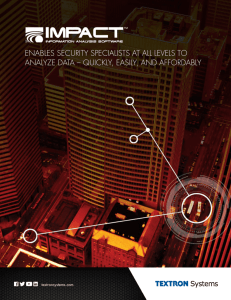
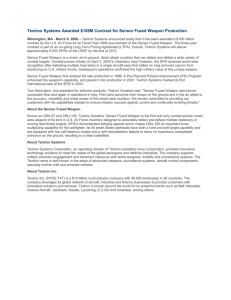
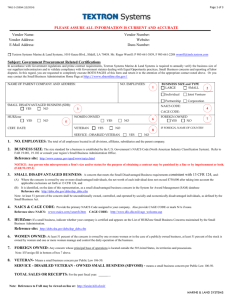
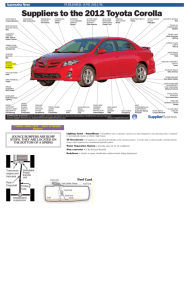
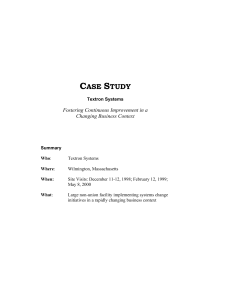

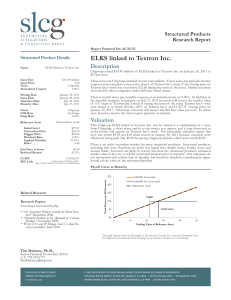
![[These nine clues] are noteworthy not so much because they foretell](http://s3.studylib.net/store/data/007474937_1-e53aa8c533cc905a5dc2eeb5aef2d7bb-300x300.png)
